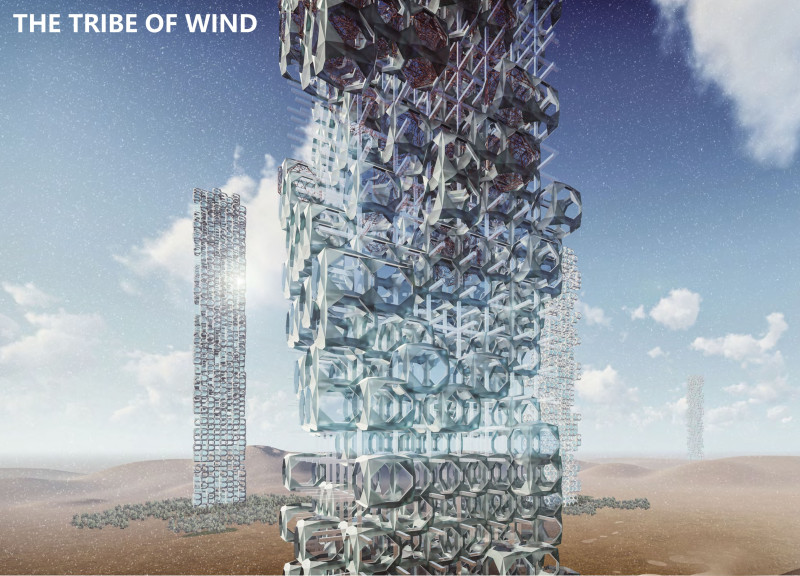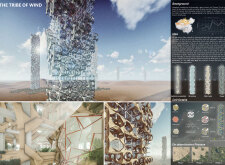5 key facts about this project
The Tribe of Wind addresses the growing environmental challenges of sandstorms in China, particularly in cities such as Beijing. The design features the Tower of Wind, which functions as an air purification system that captures airborne particles. Located strategically at the boundary between desert and oasis, it aims not only to improve air quality but also to support ecological recovery in affected areas. The overall design emphasizes the relationship between the structure and its environment, integrating nature into urban life.
Design Concept
The Tower of Wind employs a clear strategy that highlights its functional role in reducing pollution while enriching its surrounding landscape. The tower takes advantage of natural wind patterns, enabling airflow to spiral downwards along its exterior. This design element is crucial for optimizing the filtration process, as it effectively captures small airborne particles before they can affect the air quality in urban areas.
Material Considerations
Porous fiber materials make up the filter cells of the tower, designed specifically to capture sand particles while remaining lightweight. Alongside these materials, the use of lightweight carbon steel adds durability and resilience required for enduring challenging weather conditions. This careful selection of materials ensures that the tower maintains its performance over time while withstanding the elements.
Ecological Integration
The tower’s strategic location plays a significant role in its mission of ecological restoration. By situating the Tower of Wind at the interface between desert and oasis, it creates spaces for vegetation to flourish, contributing to a sustainable ecosystem in dry regions. Areas designed for greenery beneath each tower promote connections with the oasis, allowing plant life to extend further into the desert. This approach encourages biodiversity, which is essential for maintaining ecological balance.
Innovative Features
The Tower of Wind goes beyond air purification by including greenhouses for seedling cultivation. This feature enhances the project’s focus on ecological health. It not only supports local plant life but also invites community engagement, making it a space for people to connect with nature. These innovative aspects demonstrate a thoughtful approach to the built environment, emphasizing the importance of architecture in environmental care.
The design presents a structure that merges function with ecological awareness, featuring a careful arrangement of air, light, and vegetation. Each element works together to revitalize and improve the surrounding landscape.



















































